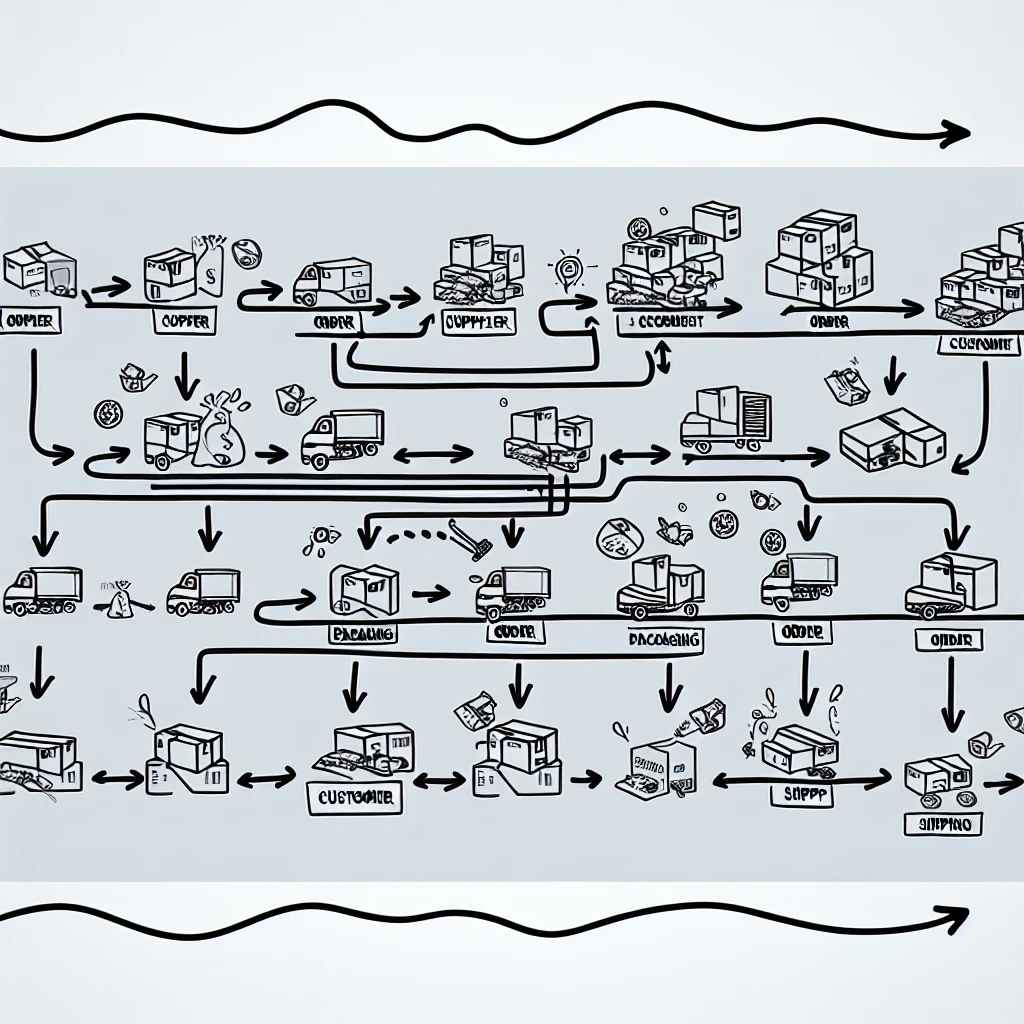Introduction to Dropshipping
Imagine a retail world where you can sell products without ever having to stock an item or worry about inventory levels. Welcome to the revolutionary concept of dropshipping, a business model that has redefined the ecommerce landscape. At its core, dropshipping is a fulfillment method where a store doesn't keep the products it sells in stock. Instead, when a store sells a product, it purchases the item from a third party and has it shipped directly to the customer. As a result, the merchant never sees or handles the product.
This model is a game-changer for inventory management. Traditional retail models require significant investment in inventory, which ties up capital and resources. Dropshipping, on the other hand, eliminates the need for upfront inventory, thereby reducing the risk of overstocking or understocking. This means entrepreneurs can start their businesses with less capital and can scale more easily without the constraints of physical inventory.
Moreover, dropshipping offers unparalleled flexibility. Retailers can offer a wider range of products since they are not limited by storage space or capital constraints. They can test new products without financial commitment, adjust their product offerings in response to market trends, and pivot quickly if a product doesn't perform as expected. This agility is a significant competitive advantage in the fast-paced world of ecommerce.
However, it's not all smooth sailing. Dropshipping can come with its own set of challenges, such as relying on third-party suppliers for order fulfillment and potential issues with shipping times and product quality. But for those who are willing to navigate these challenges, dropshipping presents an opportunity to build a thriving online business with a lean operational model.
As we delve deeper into the intricacies of dropshipping, we'll explore how this model not only simplifies inventory management but also streamlines accounting processes. By removing the need to manage physical stock, dropshipping can significantly reduce the complexity of accounting and financial management for ecommerce businesses. Stay tuned as we unpack the accounting benefits of dropshipping and how it can lead to more efficient inventory tracking and financial oversight.
Accounting Benefits of Dropshipping
When it comes to the financial health of an ecommerce business, accounting practices are the linchpin. Dropshipping, with its streamlined approach, can offer several accounting benefits that are worth noting. For starters, the reduction in inventory handling responsibilities translates directly into simplified accounting. Without the need to purchase and manage stock, dropshippers can bypass the complexities of tracking inventory levels, calculating the cost of goods sold, and reconciling physical stock with accounting records.
Furthermore, the dropshipping model inherently minimizes the risk of inventory shrinkage, which is the loss of products due to theft, damage, or administrative errors. Since the inventory is managed by the suppliers, the responsibility and risk of shrinkage are transferred to them, thereby reducing potential losses and the need for complex tracking systems on the retailer's end.
Another significant advantage is the ease of scalability. As sales volume increases, the accounting workload doesn't necessarily have to. Because you're not dealing with physical products, the jump from selling 100 to 1,000 items doesn't require a proportional increase in accounting resources. This scalability is a boon for businesses looking to grow without being bogged down by escalating administrative tasks.
Moreover, the cash flow management in dropshipping is more straightforward. Since products are only purchased after a sale is made, there's a direct correlation between sales and expenditures. This pay-as-you-go approach means you can maintain a positive cash flow, making financial planning and budgeting less cumbersome.
Dropshipping also simplifies the tax calculation process. With traditional retail, tracking and reporting taxes can be a logistical nightmare due to the various costs associated with inventory. Dropshipping businesses, however, typically have fewer expenses to consider, making tax time less daunting and more manageable.
Finally, the dropshipping model allows for real-time financial monitoring. With the right ecommerce platform and accounting software integration, you can automate much of the financial reporting, giving you an up-to-date view of your business's financial status at any given moment. This level of financial transparency and control is invaluable for making informed business decisions.
In conclusion, dropshipping not only revolutionizes the way products are sold but also has a profound impact on the accounting side of ecommerce. By simplifying the accounting process, it allows entrepreneurs to focus more on growth strategies and less on the nitty-gritty of financial management.
Inventory Tracking in Dropshipping
But let's not overlook a crucial component of the dropshipping business model: inventory tracking. While it's true that dropshippers don't handle inventory in the traditional sense, effective inventory management is still pivotal to ensure customer satisfaction and maintain a good business reputation. After all, selling products that are out of stock or discontinued can lead to negative reviews and a high rate of customer service issues.
To navigate this, savvy dropshippers employ a variety of tools and techniques. Real-time inventory tracking systems are a must-have, as they allow you to sync with your suppliers' stock levels automatically. This means you can display accurate stock information on your website, preventing customers from ordering items that aren't available. Integration with your ecommerce platform is key here; platforms like Shopify or WooCommerce often have built-in tools or plugins that can connect directly with your suppliers' databases.
Another technique is to establish strong communication channels with your suppliers. Regular updates on stock levels, future availability of products, and any potential delays are essential. This doesn't just help with inventory tracking but also with planning promotions and marketing campaigns around products you know will be in stock.
Advanced dropshippers might also leverage predictive analytics to forecast demand and adjust their listings accordingly. By analyzing past sales data, search trends, and even social media buzz, you can predict which items will be hot sellers and ensure your listings are prioritized for those products.
Inventory tracking in dropshipping also involves a proactive approach to supplier management. Diversifying your supplier base can mitigate the risks of stock-outs and delays. Working with multiple suppliers for the same product ensures that if one runs out of stock, you can still fulfill orders by routing them to another supplier. This requires a more complex tracking system but can be a lifesaver during high-demand periods like the holiday season.
Lastly, the use of automated alerts for low-stock thresholds can keep you a step ahead. Setting up notifications for when products hit a certain inventory level gives you the time to react before it becomes a problem for your customers.
While dropshipping simplifies many aspects of ecommerce, inventory tracking remains a nuanced challenge. By utilizing the right tools and staying vigilant, dropshippers can navigate these waters smoothly, ensuring a seamless experience for their customers and a stable foundation for their business.







